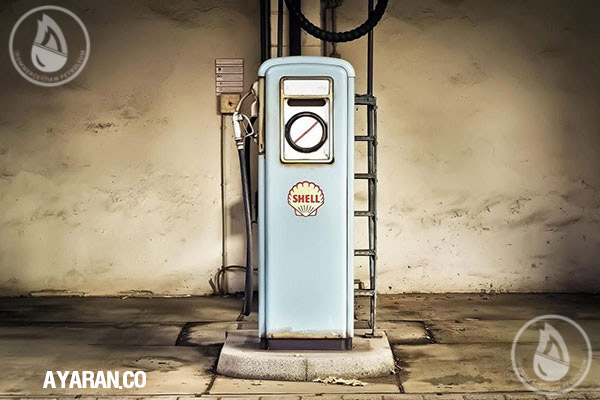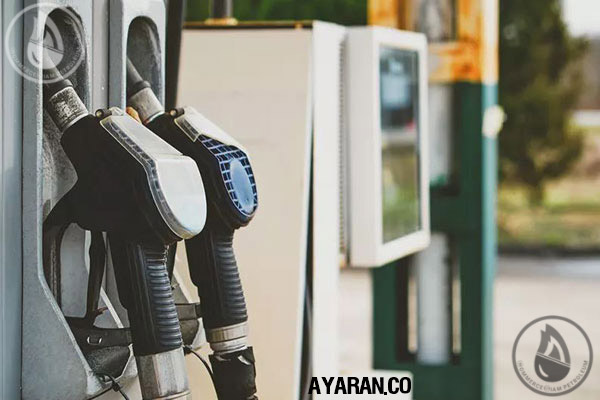

About

Products
Petroleum can be used to make various products ranging from rocket fuel to plastics and paints. Here are the most popular ones available on the market:
1. Ethylene (This substance is commonly used to make different types of films and plastics. It can be found in cleaning agents such as detergents as well as lubricants for various mechanical components such as industrial valves.)
2. Benzene (Benzene is very popular in the gasoline industry, but it can also be used to make nylons which are helpful in the packaging industry. Certain nylon fibers are also used to make clothes.)
3. Medical resins (Petroleum can also be used to make resins used in the medical industry. Some of these resins can purify drugs and others are used to create different types of treatments, especially for those with AIDS or cancer.)
4. Medical Plastics (The healthcare industry requires a lot of disposable products made from plastic such as bottles, medical syringes, etc. Petroleum can be used to create such plastics in various shapes and sizes.)
5. Food Preservatives (Different types of petrochemical products can be used in the food industry to create preservatives. These substances prolong the shelf life of foods stored in cans and bags. Some ingredients found in candies and food colorings are also made from various types of petrochemical products to enhance their flavor and taste.)
6. Cosmetics (Petrochemical products are usually used to create a wide variety of household products such as perfumes, cosmetics, makeup products, aftershaves, etc. Shampoos and hair dyes also contain petrochemical products in various quantities. If you use wax for your hair or beard, it has been created using petroleum derivatives.)
7. Fertilizers (Certain plants, vegetables or flowers require fertilizers to help them grow quicker and remain healthy. A plethora of fertilizers and pesticides contain petrochemical products in their content.)
8. Carpets (Most carpets that you can find in a household is manufactured using multiple petrochemical products. These products are intended to add color to the carpet as well as strengthen the fibers.)
9. Safety Glass (Tempered or safety glass is much tougher than regular glass and it’s used in residential and commercial buildings. It keeps thieves at bay as well as protecting certain perimeters such as pools against pets or small kids. Safety glass is made using petrochemical products for enhanced strength and durability.)
10. Crayons and Markers (The crayons you are probably using to draw on paper or a magnetic board contain petrochemical substances. These substances are used to add color and maybe make the ink resistant to UV rays. This applies to all kinds of crayons and markers, whether we talk about the ones used by kids or by engineers in meeting rooms.)
Services

- Light: Light crude oil is liquid petroleum that has a low density and flows freely at room temperature. It has a low viscosity, low specific gravity and high API gravity due to the presence of a high proportion of light hydrocarbon fractions. It generally has a low wax content.
- Heavy: Heavy crude oil (or extra heavy crude oil) is highly-viscous oil that cannot easily flow from production wells under normal reservoir conditions. It is referred to as “heavy” because its density or specific gravity is higher than that of light crude oil.
- Condensate: Condensate is a mixture of light liquid hydrocarbons, similar to a very light (high API) crude oil. It is typically separated out of a natural gas stream at the point of production (field separation) when the temperature and pressure of the gas is dropped to atmospheric conditions.
- Gasoil: Gas oil comes from crude oil, the crude oil that is pumped out of the ground is a black liquid, known as petroleum. Depending on the way that the crude oil is distilled, a variety of fuels can be made.
- Naphtha (Light & Heavy): One source distinguishes by boiling point: Light naphtha is the fraction boiling between 30 °C and 90 °C and consists of molecules with 5–6 carbon atoms. Heavy naphtha boils between 90 °C and 200 °C and consists of molecules with 6–12 carbon atoms.
- Fuel Oil (280 & 380 CST): Oil is made of long hydrocarbon chains, particularly alkanes, cycloalkanes and aromatics. The term Fuel Oil is also used in a stricter sense to refer only to the heaviest commercial fuel that can be obtained from crude oil, heavier than gasoline and naphtha.
- Gasoline: refined petroleum used as fuel for internal combustion engines; petrol.

- Ethylene: It is a colorless, flammable gas having a sweet taste and odor. Natural sources of ethylene include both natural gas and petroleum; it is also a naturally occurring hormone in plants, in which it inhibits growth and promotes leaf fall, and in fruits, in which it promotes ripening.
- HDPE/LLDPE/MDPE/XLPE/UHMW: LDPE (Low Density Polyethylene) has the most excessive branching. This causes the low density to have a less compact molecular structure which is what makes it less dense. It has a density of 0.91-0.925g/cm3.LLDPE (Linear Low-Density Polyethylene) has a significant number of short branches. Because it has shorter and more branches its chains are able slide against each other upon elongation without becoming entangled like LPDE which has long branching chains that would get caught on each other. This gives LLDPE higher tensile strength and higher impact and puncture resistance than the LDPE. It has a density of 0.91-0.94g/cm3.MDPE (Medium Density Polyethylene) has a little less branching than the HDPE. It is less notch sensitive then HDPE and has better stress cracking resistance. It has a density range of 0.926 – 0.94 g/cm3HDPE (High Density Polyethylene) has minimal branching of its’ polymer chains. Because it is denser it is more rigid and less permeable than the LDPE. It has a density of 0.941-0.965g/cm3.XLPE (Crosslinked Polyethylene) is high density polyethylene which has covalent bonds between connecting its polymer chains. These bonds are caused by using heat plus chemicals or radiation and they help to form 3-dimensional polymers with high molecular weights. These bonds tie the polymers together and lengthening the polymer chains giving it better physical properties. The molecular structure that is formed by crosslinking provides superior stress cracking, improved toughness, stiffness, and chemical resistance compared to the HDPE.UHMW (Ultra High Molecular Weight Polyethylene) has extremely long chains, with molecular weight numbering in the millions (usually between 2 to 6 million). In general, HDPE molecules have between 700 and 1,800 monomer units per molecule, whereas UHMW molecules tend to have 100,000 to 250,000 monomers each. The chains of UHMW align in the same direction. The bonds between the chains are not very strong however, because they are so long there are more bonds holding it together then polyethylene with shorter chains. These long chains give UHMW high tensile strength. The longer chains serve to transfer load more effectively to the polymer backbone by strengthening intermolecular interactions. This causes the material to be very tough and gives it the highest impact strength of the polyethylene’s. It has a density of 0.928-0.941 g/cm3.
- Butane/Propane: Both propane and butane are both liquid petroleum gases (LPGs). They are both flammable hydrocarbon gases and byproducts of natural gas processing. Propane and butane also both produce carbon dioxide, water, carbon monoxide and soot when combusted. They each can be used to fuel vehicles and heating stoves.
- Polyethylene/Polypropylene/EVA/TPV/PVC/PS/EPDM/Etc.: Polyethylene (There are three types of resins by density, LDPE, LLDPE, HDPE. Among these products, LLDPE includes the Higher Alpha-Olefin resins and POP/POE(Plastomer/Elastomer) produced in the metallocene process, and HDPE has various specialty grades including HMWPE.), Polypropylene (It is classified by molecular structure, Homopolymer, Impact Copolymer, and Random Co (Ter)-polymer. In these days most of manufacturers are aiming the selective grades for general purpose to secure cost competitiveness and the respective producers are building up their own domain.), EVA (Ethylene Vinyl-Acetate Monomer) (There are various spectrum of the product’s by VA contents, and we have enormous supply pool of this product.), TPV (Thermo-Plastic Vulcanization) (This is a dynamically cured thermoplastic elastomer(TPE) made of PP and EPDA which provides an excellent combination of mechanical, thermal, and chemical properties expected of conventional thermoset rubber.), PVC (Poly Vinyl Chloride) (It is available for two types of PVC by production process. One is ‘Straight Resin’ which is just produced in common process including homo/co/ter-polymers. The other one is ‘Paste Resin’ which is used as an ingredient for a wide range of processed goods.), PS/EPS (polystyrene/Expandable Polystyrene) (There are several types of products including GPPS, HIPS, High Performance PS, PS Compounds, EPS, and Energy Saving EPS.), EPDM (Ethylene Propylene Dien Monomer) (This is a high value-added synthetic rubber that possesses outstanding resistance to foul weather, heat and corrosive ozone so that mainly used in automotive components.)
- Ammonia: Ammonia is a compound of nitrogen and hydrogen with the formula NH₃. A stable binary hydride, and the simplest pnictogen hydride, ammonia is a color less gas with a distinct pungent smell.
- Urea: Urea (CH4N2O), also popularly known as Carbamide, is the diamide form of carbonic acid. Urea is widely used as a fertilizer, a feed supplement, and a starting material in the manufacture of drugs and plastics. It is a colorless substance existing in the crystalline form, which melts at 132.7°C (271° F) and decomposes even before the Urea boiling point.
- Methanol: Methanol — the simplest alcohol (CH3OH) — is a chemical building block for hundreds of everyday products, including plastics, paints, car parts and construction materials. Methanol also is a clean energy resource used to fuel cars, trucks, buses, ships, fuel cells, boilers and cook stoves.
- Sulfur: Sulfur is commonly used to create sulfuric acid, which is used in a number of different industries. Specifically, sulfuric acid is used to make fertilizers and lead-acid batteries.[2] As well, sulfur is used in the production or inorganic chemicals, matches, explosives, cement, and glass.
- Ethane: Ethane is an organic chemical compound with chemical formula C ₂H ₆. At standard temperature and pressure, ethane is a colorless, odorless gas. Like many hydrocarbons, ethane is isolated on an industrial scale from natural gas and as a petrochemical by-product of petroleum refining.
- SBS/SB/LCBR: The SBS/SB/LCBR (Rubber) Unit is defined as a Batch Plant based on Polymers Europa technology, producing Styrene/Butadiene block copolymers (SBS), Low-Cis Butadiene Rubber (LCBR) and Styrene/Butadiene copolymers (SB), to be built
- Benzene: Benzene is an organic chemical compound with the molecular formula C₆H₆. The benzene molecule is composed of six carbon atoms joined in a planar ring with one hydrogen atom attached to each. Because it contains only carbon and hydrogen atoms, benzene is classed as a hydrocarbon.
- Liquid fuel: Liquid fuels are combustible or energy-generating molecules that can be harnessed to create mechanical energy, usually producing kinetic energy; they also must take the shape of their container. It is the fumes of liquid fuels that are flammable instead of the fluid.
- P-xylene/O-xylene: O-xylene and P-xylene is that O-xylene contains two methyl groups attached to the benzene ring at adjacent substituent positions, whereas P-xylene contains two methyl groups attached to the benzene ring at opposite substituent positions.
- Aromatics/Ethyl benzene: Ethylbenzene is an aromatic hydrocarbon that occurs naturally in petroleum and is a component of aviation and automotive fuels. It is used as a solvent and in the production of synthetic rubber and styrene.
- Olefin/Propylene oxide: Most propylene oxide is used as an intermediate in the production of polyether polyols for polyurethane foams, and in the production of propylene glycol for unsaturated polyester resins. Minor quantities are used for sterilizing medical equipment and for fumigating foodstuffs.
- Butadiene/Raffinate: Raffinate 1 is a chemical building block used in the manufacture of methyl tertiary butyl ether (MTBE) and diisobutylene (DIB). MTBE is a liquid added to petroleum to reduce emissions, and DIB is an intermediate in the production of alcohols and solvents.
- Bitumen: Bitumen is commonly used to build highways, motorways and rail networks. Bitumen has excellent water-proofing properties and is widely used for making roofing products along with a range of other household and industrial applications, from emulsion paints to sound-proofing
Article

The Invention of Gasoline
Gasoline is a pretty ubiquitous fuel these days, but this wasn’t always the case. In the early days of powered transportation, steam power was the most common type of power used in vehicles, with most steam engines burning coal as a power source. It’s only been within the last 120 years that gasoline has been so widely used.
Today, we’re talking all about the history of gasoline, including who invented it, what the first car to use it was, and how it was exactly that gasoline ended up becoming such a popular type of fuel.
Who Invented Gasoline?
It can be hard to pin down who exactly invented gasoline since no one ever set out to make gasoline to begin with. Gasoline is refined from crude oil, as you probably know, but originally, crude oil was refined primarily to make fuels like kerosene. Gasoline is actually a byproduct produced by making kerosene from crude oil.
When kerosene was first invented and patented in 1854, the internal combustion engine was still a few years away from its creation; kerosene was used primarily as lantern fuel. Even when the first internal combustion engine was invented in 1860, it used coal gas instead of gasoline to produce power.
One of the men instrumental in the invention of gasoline was Abraham Gesner, a Canadian geologist and chemist who was actually the inventor of kerosene. However, his method used solid coal as a basis for refining kerosene, and as a result, this method did not actually produce gasoline.
Samuel Martin Kier was another man whose contributions to the petroleum industry helped create gasoline. Kier founded the first oil refinery and was the first man to actually refine crude oil into kerosene. At the time, the mass production of crude oil didn’t exist yet, so he was only able to produce kerosene on a relatively small scale.
Since people were originally refining crude oil solely to make kerosene, the gasoline that was produced during the refining process was deemed to have no use. As a result, early gasoline was usually converted into other types of fuel or just discarded outright.

Fuels Used in Our Daily Life
The world depends on a great deal of its energy in the form of fossil fuels. Examples of fuels include gasoline, coal and alcohol. Most of the fuels come from non-renewable sources; once used, they are gone forever. Each day, people bathe, cook, clean, do laundry and drive using various types of fuels. A quick review of different fuels reveals the important roles they play in daily life.
Gasoline – Essential for Transportation
The most obvious fuel used in daily life runs cars, school buses and trucks. Gasoline and diesel are non-renewable fuels created from crude oil deposits in the ground or beneath the oceans. Lawnmowers and other maintenance equipment also run on gasoline. Construction sites power backhoes, dump trucks, cranes and other equipment with diesel.
Natural Gas – Heating and Cooking
Natural gas can power the heating systems, stove tops, water heaters and dryers in your home. Natural gas burns very cleanly and creates abundant energy when burning, according the Natural Gas.org. This type of fuel is mostly comprised of methane but can contain other gases as well. Natural gas often occurs as underground pockets near oil deposits. Oil emits gases that rise to the higher levels of underground pockets of oil trapped within rock layers. Wells tap into these pockets to remove the natural gas for use in your home.
Coal – Electric Power
Many electrical plants burn coal as the primary fossil fuel for powering the electrical supply for homes across the country. According to the American Coal Foundation, coal-powered electricity fuels the electrical needs for more than half of all U.S. homes. Machines crumble the coal into small particles that get placed inside a furnace. The coal gets burned to heat water that creates steam that fuels a turbine to create mechanical energy. This mechanical energy converts to electrical energy in a generator then gets transmitted through substations that deliver electricity to customers.
Alcohol – Gasoline Helper
Alcohol has played a major role as a fuel supply in recent decades. In particular, alcohol, or ethanol, made from corn is mixed with gasoline for much of the US liquid fuel needs. Properly designed, cars and trucks can burn the gasoline-alcohol mixture without problems. By adding US-made alcohol to gasoline, the country’s fuel suppliers reduce the need for imported crude oil.
Uranium – Carbon-Free Power
Although uranium isn’t “burned” to make heat like coal or natural gas is, it still counts as fuel as nuclear power plants consume it and extract energy from it. It is also like coal or other fuels in that it is non-renewable: when the supply is used up, it is gone for good.
To get the profile of this company, please click on the download button.
unit covers procurement, import, export and international trade in several products including: crude oil, condensate, LPG, petroleum and petrochemical products, chemical solvents, crude palm oil, refined palm oil, palm kernel shells and other commodities.
Copyright © 2022 All Rights Reserved for Ayaran. | Design by : Ayaran World Trading Group
